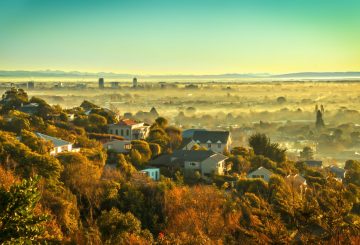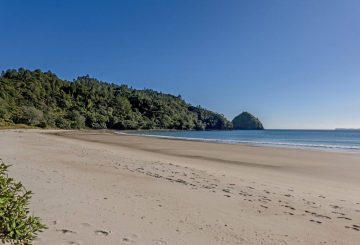Một nghiên cứu mới sẽ tìm hiểu làm thế nào các tòa nhà công cộng, bao gồm các trường học, có thể được thiết kế để sử dụng công nghệ làm mát và sưởi ấm bền vững và giúp New Zealand đạt được mục tiêu net-zero 2050 của mình.
Đại học Canterbury Khoa Kỹ thuật Dân dụng và Tài nguyên Thiên nhiên Giảng viên cao cấp Tiến sĩ Wentao Wu đang dẫn đầu nghiên cứu quốc tế nhằm giảm lượng khí thải carbon bằng cách nâng cao hiệu quả năng lượng trong các tòa nhà lớn.
Ông đã nhận được tài trợ của Royal Society Te Apārangi Catalyst để tìm hiểu làm thế nào ngành xây dựng có thể sử dụng các nguồn năng lượng tái tạo như thông gió tự nhiên và năng lượng mặt trời để tăng hiệu suất năng lượng của khối lượng nhiệt – tiềm năng hấp thụ nhiệt của đồ nội thất và sàn bê tông – tạo ra “các tòa nhà ít cacbon”.
Tiến sĩ Wu nói: “Sự nóng lên toàn cầu đã thúc đẩy chúng ta tìm kiếm các giải pháp trung hòa cacbon.
Hiện nay ngành xây dựng New Zealand chiếm 9% tổng lượng khí thải carbon của chúng tôi và Chính phủ đã cam kết đạt được lượng khí nhà kính không phát thải vào năm 2050.
Tiến sĩ Wu đang dẫn đầu dự án với sự hợp tác của các nhà nghiên cứu tại sáu trường đại học từ năm quốc gia, bao gồm Đại học Harvard ở Hoa Kỳ, Đại học Cardiff, Vương quốc Anh và Đại học Chonqing của Trung Quốc.
Tiến sĩ Wu cho biết một giải pháp để thiết kế các tòa nhà phát thải thấp là sử dụng không khí bên ngoài mát hơn vào ban đêm để thông gió cho không gian bên trong một tòa nhà.
Vào mùa đông, ông tin rằng các ống nước nóng bằng năng lượng mặt trời đặt bên trong sàn bê tông có thể được sử dụng thay cho hệ thống sưởi ấm điện truyền thống.
Ông hy vọng sẽ phát triển một hướng dẫn thiết kế và cải tạo sẽ giúp các nhà hoạch định chính sách, kiến trúc sư và nhà xây dựng tạo ra các tòa nhà tiết kiệm năng lượng hơn, giảm phát thải carbon trong lĩnh vực này.
Tiến sĩ Wu gần đây đã thực hiện nghiên cứu tại Hoa Kỳ, được tài trợ bởi Quỹ Khoa học Quốc gia Hoa Kỳ, đã chứng minh hiệu quả của việc sử dụng hệ thống thông gió ban đêm để làm mát nội thất của các tòa nhà để chúng có thể hoạt động như một tản nhiệt vào ngày hôm sau.
Tín dụng: sunlive.co.nz






























































